publications
Here you can find a list of all my peer-reviewed publications. You can also find my citation profiles below.
2024
-
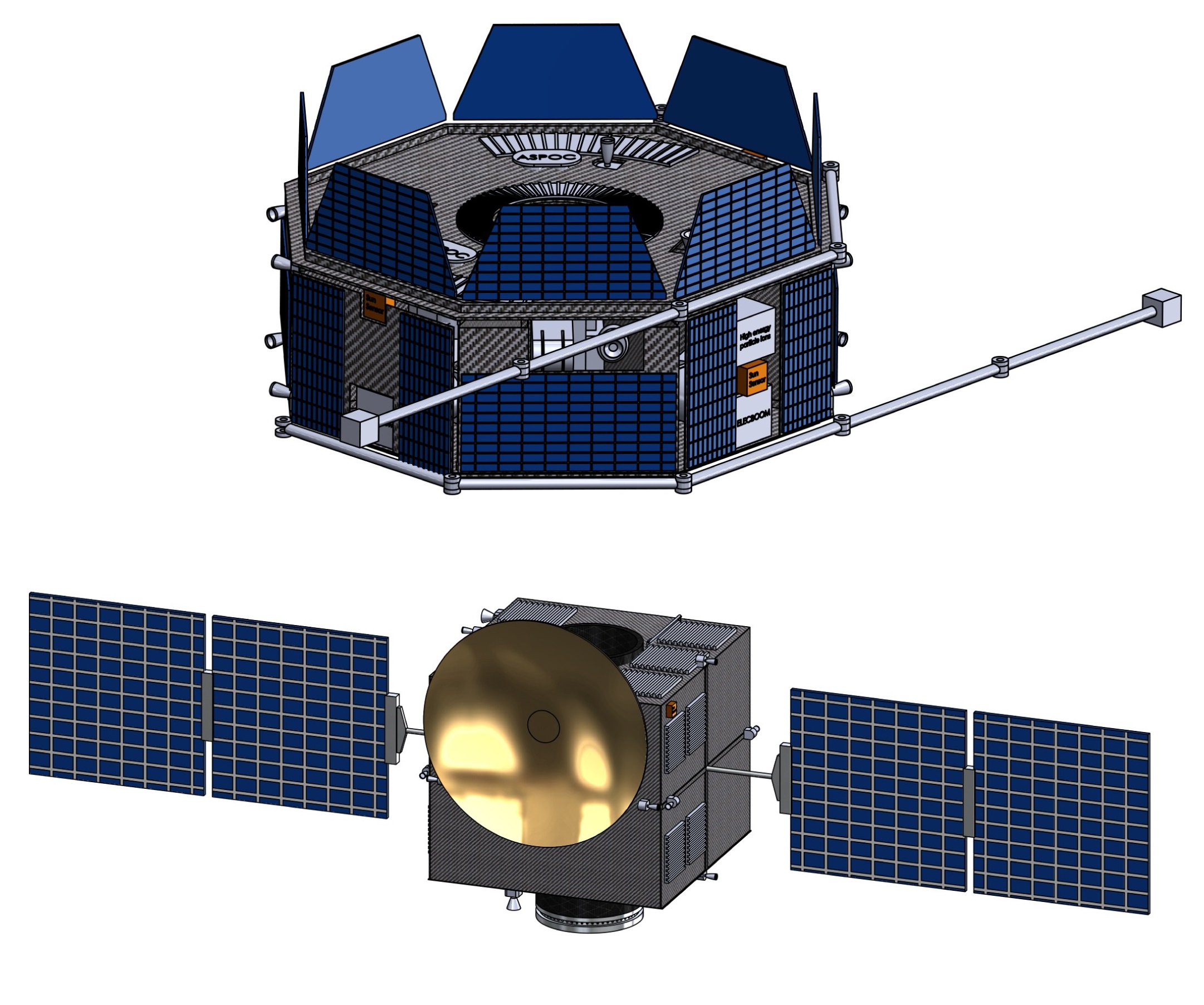 Magnetospheric Venus Space Explorers (MVSE) mission: A proposal for understanding the dynamics of induced magnetospheresRoland Albers, Henrik Andrews, Gabriele Boccacci, Vasco D.C. Pires, Sunny Laddha, and 25 more authorsActa Astronautica, Aug 2024
Magnetospheric Venus Space Explorers (MVSE) mission: A proposal for understanding the dynamics of induced magnetospheresRoland Albers, Henrik Andrews, Gabriele Boccacci, Vasco D.C. Pires, Sunny Laddha, and 25 more authorsActa Astronautica, Aug 2024Induced magnetospheres form around planetary bodies with atmospheres through the interaction of the solar wind with their ionosphere. Induced magnetospheres are highly dependent on the solar wind conditions and have only been studied with single spacecraft missions in the past. Without simultaneous measurements of solar wind variations and phenomena in the magnetosphere, establishing a link between both can only be done indirectly, using statistics over a large set of measurements. This gap in knowledge could be addressed by a multi-spacecraft plasma mission, optimized for studying global spatial and temporal variations in the magnetospheric system around Venus, which hosts the most prominent example of an induced magnetosphere in our solar system. The MVSE mission comprises four satellites, of which three are identical scientific spacecraft, carrying the same suite of instruments probing different regions of the induced magnetosphere and the solar wind simultaneously. The fourth spacecraft is the transfer vehicle which acts as a relay satellite for communications at Venus. In this way, changes in the solar wind conditions and extreme solar events can be observed, and their effects can be quantified as they propagate through the Venusian induced magnetosphere. Additionally, energy transfer in the Venusian induced magnetosphere can be investigated. The scientific payload includes instrumentation to measure the magnetic field, electric field, and ion–electron velocity distributions. This study presents the scientific motivation for the mission as well as requirements and the resulting mission design. Concretely, a mission timeline along with a complete spacecraft design, including mass, power, communication, propulsion and thermal budgets are given. This mission was initially conceived at the Alpbach Summer School 2022 and refined during a week-long study at ESA’s Concurrent Design Facility in Redu, Belgium.
@article{albersMagnetosphericVenusSpace2024, title = {Magnetospheric {Venus} {Space} {Explorers} ({MVSE}) mission: {A} proposal for understanding the dynamics of induced magnetospheres}, volume = {221}, issn = {00945765}, shorttitle = {Magnetospheric {Venus} {Space} {Explorers} ({MVSE}) mission}, url = {https://linkinghub.elsevier.com/retrieve/pii/S0094576524002674}, doi = {10.1016/j.actaastro.2024.05.017}, language = {en}, urldate = {2024-10-26}, journal = {Acta Astronautica}, author = {Albers, Roland and Andrews, Henrik and Boccacci, Gabriele and Pires, Vasco D.C. and Laddha, Sunny and Lundén, Ville and Maraqten, Nadim and Matias, João and Krämer, Eva and Schulz, Leonard and Palanca, Ines Terraza and Teubenbacher, Daniel and Baskevitch, Claire and Covella, Francesca and Cressa, Luca and Moreno, Juan Garrido and Gillmayr, Jana and Hollowood, Joshua and Huber, Kilian and Kutnohorsky, Viktoria and Lennerstrand, Sofia and Malatinszky, Adel and Manzini, Davide and Maurer, Manuel and Nidelea, Daiana Maria Alessandra and Rigon, Luca and Sinjan, Jonas and Suarez, Crisel and Viviano, Mirko and Knutsen, Elise Wright}, month = aug, year = {2024}, pages = {194--205}, } -
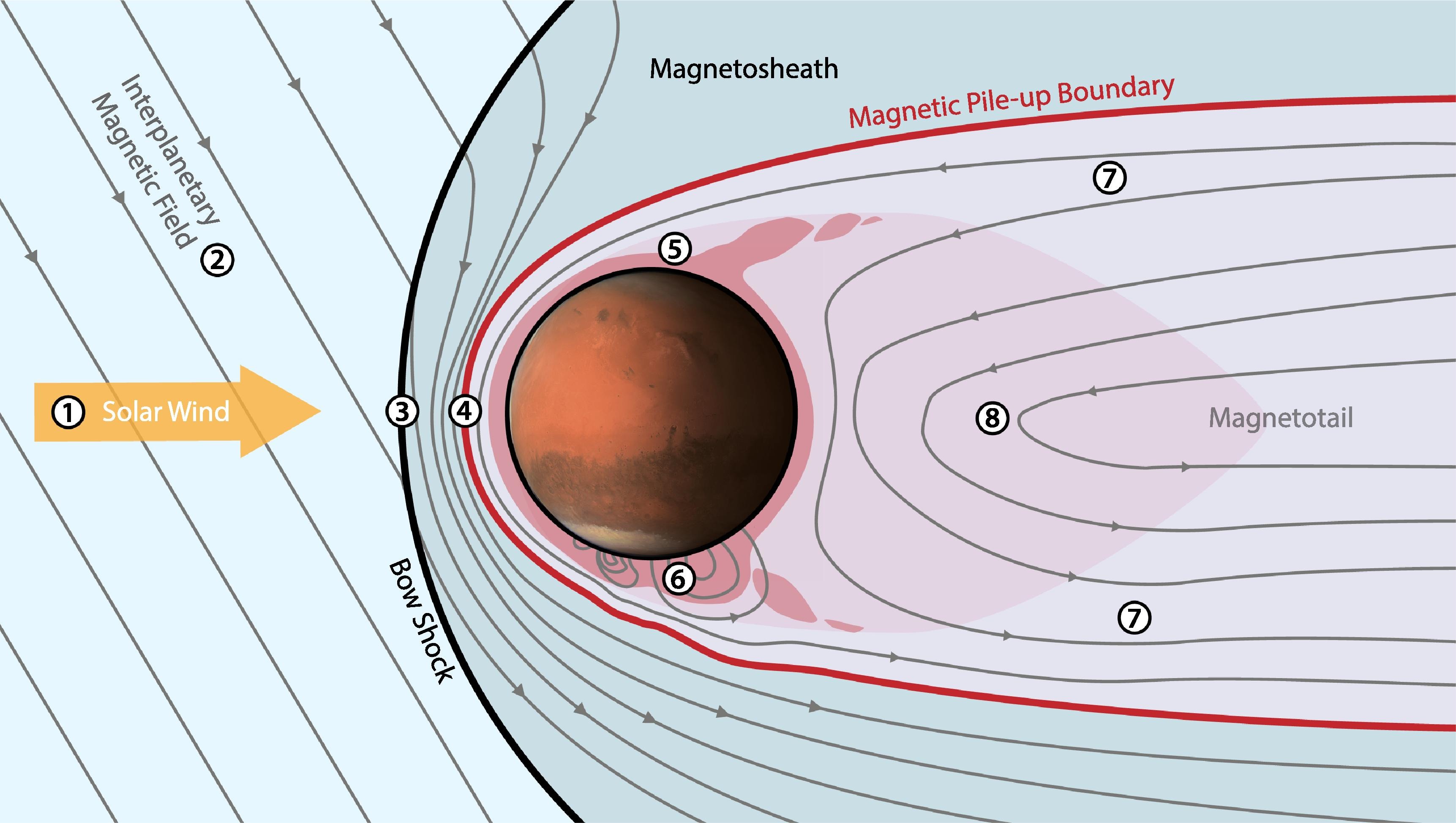 M5 — Mars Magnetospheric Multipoint Measurement Mission: A multi-spacecraft plasma physics mission to MarsCormac J.K. Larkin, Ville Lundén, Leonard Schulz, Markus Baumgartner-Steinleitner, Marianne Brekkum, and 11 more authorsAdvances in Space Research, Mar 2024
M5 — Mars Magnetospheric Multipoint Measurement Mission: A multi-spacecraft plasma physics mission to MarsCormac J.K. Larkin, Ville Lundén, Leonard Schulz, Markus Baumgartner-Steinleitner, Marianne Brekkum, and 11 more authorsAdvances in Space Research, Mar 2024Mars, lacking an intrinsic dynamo, is an ideal laboratory to comparatively study induced magnetospheres, which can be found in other terrestrial bodies as well as comets. Additionally, Mars is of particular interest to further exploration due to its loss of habitability by atmospheric escape and possible future human exploration. In this context, we propose the Mars Magnetospheric Multipoint Measurement Mission (M5), a multi-spacecraft mission to study the dynamics and energy transport of the Martian induced magnetosphere comprehensively. Particular focus is dedicated to the largely unexplored magnetotail region, where signatures of magnetic reconnection have been found. Furthermore, a reliable knowledge of the upstream solar wind conditions is needed to study the dynamics of the Martian magnetosphere, especially the different dayside boundary regions but also for energy transport phenomena like the current system and plasma waves. This will aid the study of atmospheric escape processes of planets with induced magnetospheres. In order to resolve the three-dimensional structures varying both in time and space, multi-point measurements are required. Thus, M5 is a five spacecraft mission, with one solar wind monitor orbiting Mars in a circular orbit at 5 Martian radii, and four smaller spacecraft in a tetrahedral configuration orbiting Mars in an elliptical orbit, spanning the far magnetotail up to 6 Mars radii with a periapsis just outside the Martian magnetosphere of 1.8 Mars radii. We not only present a detailed assessment of the scientific need for such a mission but also show the resulting mission and spacecraft design taking into account all aspects of the mission requirements and constraints such as mass, power, and link budgets. Additionally, different aspects of the mission programmatics like a possible mission timeline, cost estimates, or public outreach are shown. The common requirements for acceptance for an ESA mission are considered. The mission outlined in this paper was developed during the Alpbach Summer School 2022 on the topic of “Comparative Plasma Physics in the Universe”.
@article{larkinM5MarsMagnetospheric2024, title = {M5 — {Mars} {Magnetospheric} {Multipoint} {Measurement} {Mission}: {A} multi-spacecraft plasma physics mission to {Mars}}, volume = {73}, issn = {02731177}, shorttitle = {M5 — {Mars} {Magnetospheric} {Multipoint} {Measurement} {Mission}}, url = {https://linkinghub.elsevier.com/retrieve/pii/S0273117723009171}, doi = {10.1016/j.asr.2023.11.032}, language = {en}, number = {6}, urldate = {2024-02-29}, journal = {Advances in Space Research}, author = {Larkin, Cormac J.K. and Lundén, Ville and Schulz, Leonard and Baumgartner-Steinleitner, Markus and Brekkum, Marianne and Cegla, Adam and Dazzi, Pietro and Iuliis, Alessia De and Gesch, Jonas and Lennerstrand, Sofia and Nesbit-Östman, Sara and Pires, Vasco D.C. and Palanca, Inés Terraza and Teubenbacher, Daniel and Enengl, Florine and Hallmann, Marcus}, month = mar, year = {2024}, pages = {3235--3255}, } -
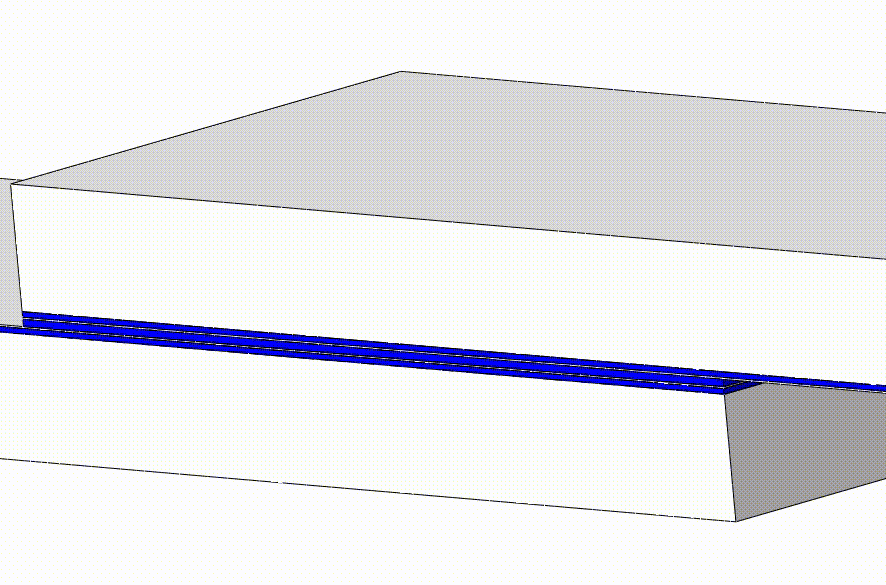 Delamination Prevention of Composite Joints with Asymmetric Carbon-Fiber Reinforced Plastic AdherendsVasco D.C. Pires, Ricardo JC Carbas, Eduardo AS Marques, and Lucas FM da SilvaJournal of Composite Materials, Feb 2024
Delamination Prevention of Composite Joints with Asymmetric Carbon-Fiber Reinforced Plastic AdherendsVasco D.C. Pires, Ricardo JC Carbas, Eduardo AS Marques, and Lucas FM da SilvaJournal of Composite Materials, Feb 2024The use of adhesive bonding in aeronautical applications has gained popularity due to its numerous advantages over traditional mechanical fastening methods. However, the issue of delamination still poses a significant challenge in fully embracing this technology in the industry. This study proposes a unique approach to optimize carbon fiber reinforced polymer (CFRP) single lap joints (SLJ) by introducing a curved joint design with varying adhesive thickness. The curvature is achieved through the intentional warpage caused by residual stresses resulting from an asymmetrical composite layup. While these residual stresses can potentially lead to cracks and distortions, this research aims to leverage their presence to enhance joint performance and mitigate delamination risks. A comprehensive analysis, involving both numerical simulations and experimental testing was conducted to compare the performance of the curved joint design with traditional configurations. The findings indicate that the curved joint design effectively prevents delamination while maintaining comparable joint strength. This demonstrates the potential benefits of employing curved joints for aeronautical components with curved geometries, affirming the feasibility and advantages of this approach. However, further optimization of the curved joint configuration is warranted to enhance its performance and expand its applicability to a broader range of applications.
@article{piresDelaminationPreventionComposite2024, title = {Delamination Prevention of Composite Joints with Asymmetric Carbon-Fiber Reinforced Plastic Adherends}, author = {Pires, Vasco D.C. and Carbas, Ricardo JC and Marques, Eduardo AS and {da Silva}, Lucas FM}, year = {2024}, month = feb, journal = {Journal of Composite Materials}, pages = {00219983241231062}, publisher = {SAGE Publications Ltd STM}, issn = {0021-9983}, doi = {10.1177/00219983241231062}, urldate = {2024-02-17}, } -
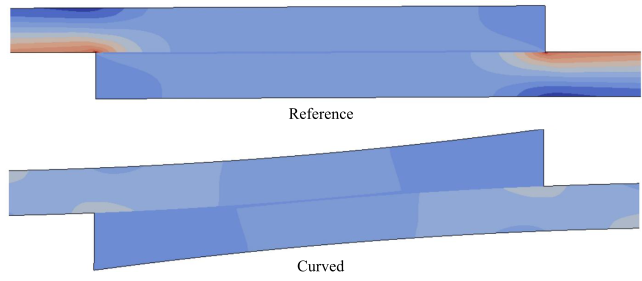 The Reduction of Stress Concentrations in Adhesive Joints with the Use of Curved Aluminum AdherendsVasco D.C. Pires, Francisco C. C. Ribeiro, Ricardo J. C. Carbas, Eduardo A. S. Marques, and Lucas F. M. Da SilvaMechanics of Advanced Materials and Structures, Jan 2024
The Reduction of Stress Concentrations in Adhesive Joints with the Use of Curved Aluminum AdherendsVasco D.C. Pires, Francisco C. C. Ribeiro, Ricardo J. C. Carbas, Eduardo A. S. Marques, and Lucas F. M. Da SilvaMechanics of Advanced Materials and Structures, Jan 2024The study proposes a novel concept of a curved single lap joint (SLJ) with non- uniform adhesive thickness to reduce stress concentrations near overlap edges. Experimental and numerical methodologies investigate this joint using two adhesives: Araldite 2015-1 and AV138. Numerical models in ABAQUS predict cohesive failure in the adhesive layer. The curved configuration doesn’t significantly enhance strength in SLJ using ductile adhesives, but for brittle ones, strength increased by 131% due to sensitivity to peak stresses. In conclusion, the curved SLJ effectively reduces stress concentrations and the effectiveness of this concept is linked to the ductility of the adhesive used.
@article{piresReductionStressConcentrations2024, title = {The Reduction of Stress Concentrations in Adhesive Joints with the Use of Curved Aluminum Adherends}, author = {Pires, Vasco D.C. and Ribeiro, Francisco C. C. and Carbas, Ricardo J. C. and Marques, Eduardo A. S. and Da Silva, Lucas F. M.}, year = {2024}, month = jan, journal = {Mechanics of Advanced Materials and Structures}, pages = {1--12}, issn = {1537-6494, 1537-6532}, doi = {10.1080/15376494.2023.2299936}, urldate = {2024-02-17}, langid = {english}, }
2023
-
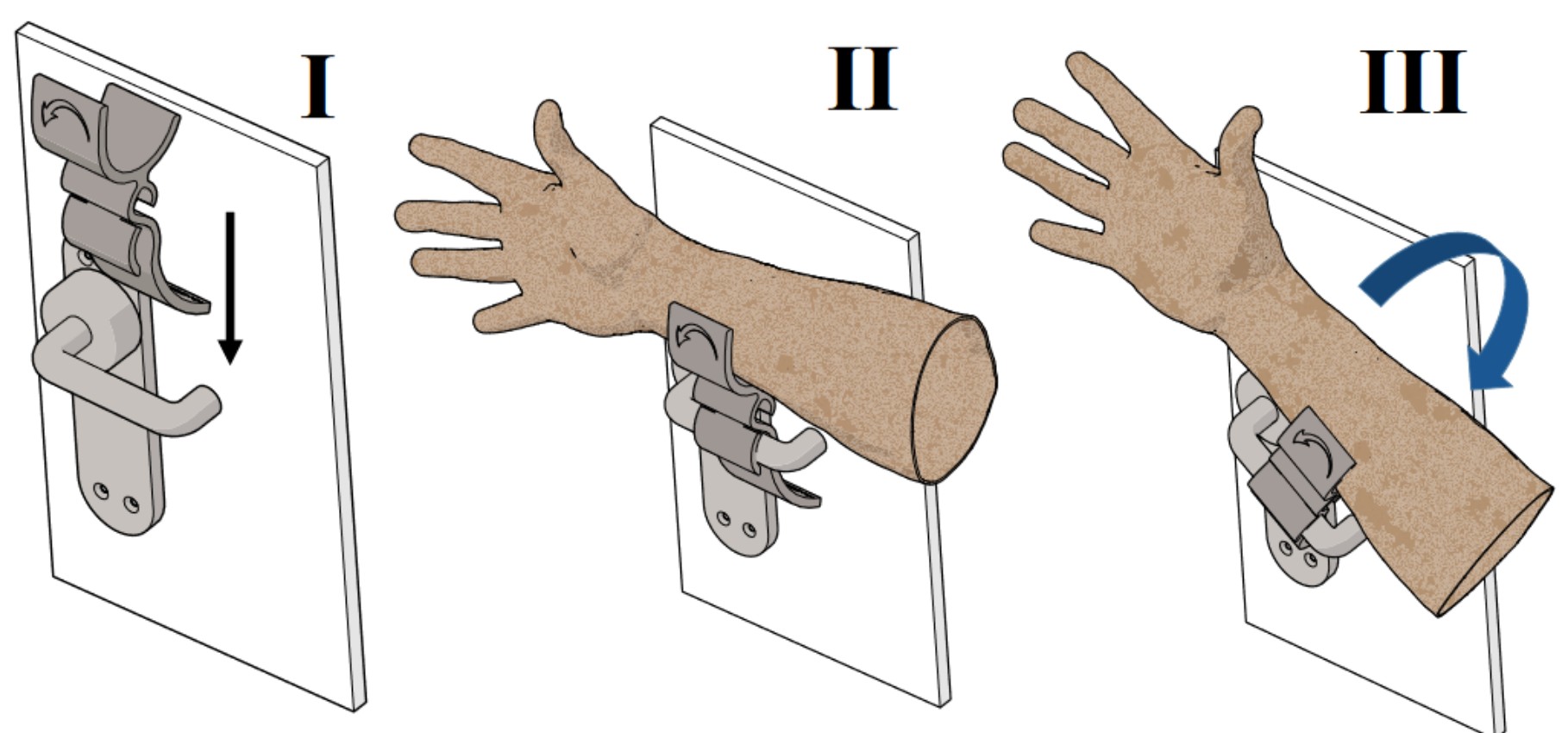 3D Printed Device for Avoiding Hand Contact with Shared Surfaces: The HandgenicA. I. Pais, C. Ferreira, V. Pires, V. Silva, J. L. Alves, and 2 more authorsIn Proceedings of the 10th Congress of the Portuguese Society of Biomechanics, Jan 2023
3D Printed Device for Avoiding Hand Contact with Shared Surfaces: The HandgenicA. I. Pais, C. Ferreira, V. Pires, V. Silva, J. L. Alves, and 2 more authorsIn Proceedings of the 10th Congress of the Portuguese Society of Biomechanics, Jan 2023The emergence of the COVID-19 pandemic required swift adaptations within public spaces, particularly in view of the uncertainties enveloping the transmission dynamics of the virus. Among the prominently contacted surfaces, door handles have garnered significant attention in research efforts aiming to curtail transmission risks. A notable proposition emerged to obviate the necessity of direct physical contact with handles, thereby introducing a novel approach. Thus, the manufacturing modality of three-dimensional (3D) printing was naturally embraced, primarily attributable to its expeditious prototyping capabilities. Although the extant literature and the open-source community have proffered diverse panaceas, this inquiry embarked on rectifying certain inadequacies that had afflicted antecedent methodologies. Elaborate exposition is provided pertaining to the progression of the developmental trajectory and the concomitant design refinements. In a bid to substantiate the efficaciousness of the produced solution, the finite element analysis (FEA) was judiciously employed to assess two distinct loading scenarios: during the installation phase and the subsequent operation of the contrivance. The empirical findings manifest the commendable load tolerance, with the proposed solution being capable of withstand forces exceeding 15 N. Furthermore, even under the most adverse circumstances, the device evinced a maximal displacement of 15 mm. Collectively, the corollaries borne out of this scholarly investigation corroborate the efficacy, utilitarian functionality, and ergonomic viabilities of the proposed solutions and manufacturing process.
@incollection{pais3DPrintedDevice2023, title = {{{3D Printed Device}} for {{Avoiding Hand Contact}} with {{Shared Surfaces}}: {{The Handgenic}}}, shorttitle = {{{3D Printed Device}} for {{Avoiding Hand Contact}} with {{Shared Surfaces}}}, booktitle = {Proceedings of the 10th {{Congress}} of the {{Portuguese Society}} of {{Biomechanics}}}, author = {Pais, A. I. and Ferreira, C. and Pires, V. and Silva, V. and Alves, J. L. and Bastos, J. A. and Belinha, J.}, editor = {Martins Amaro, Ana and Roseiro, Luis and Messias, Ana L{\'u}cia and Gomes, Beatriz and Almeida, Henrique and Ant{\'o}nio Castro, Maria and Neto, Maria Augusta and De F{\'a}tima Paulino, Maria and Maranha, V{\'i}tor}, year = {2023}, pages = {3--15}, publisher = {Springer Nature Switzerland}, address = {Cham}, doi = {10.1007/978-3-031-47790-4_1}, urldate = {2024-02-29}, isbn = {978-3-031-47789-8 978-3-031-47790-4}, langid = {english}, }
2022
-
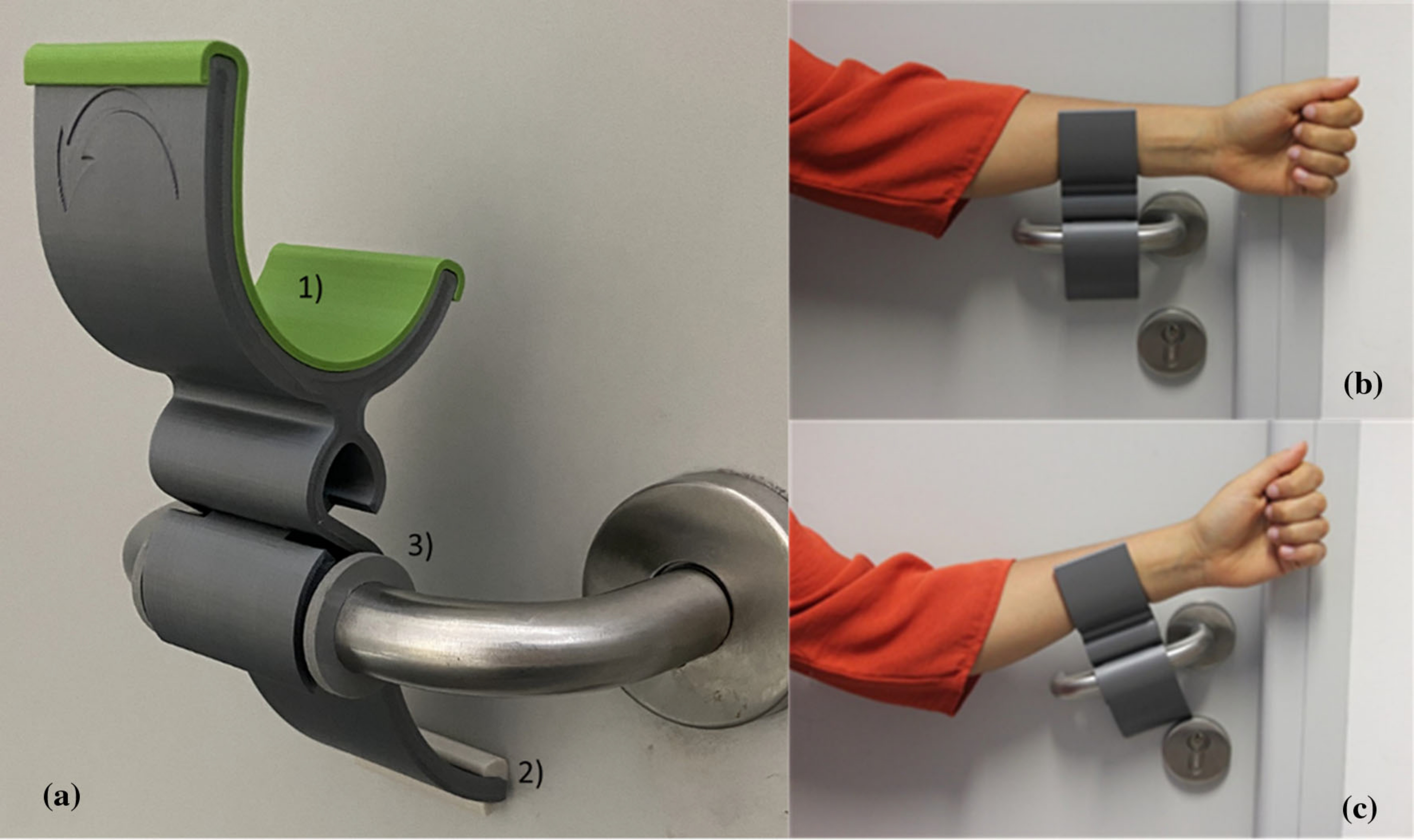 3D Printed Devices to Avoid Hand Contact with Commonly Shared SurfacesA. Pais, C. Ferreira, V. Pires, V. Silva, J. Lino Alves, and 2 more authorsInternational Journal on Interactive Design and Manufacturing (IJIDeM), Sep 2022
3D Printed Devices to Avoid Hand Contact with Commonly Shared SurfacesA. Pais, C. Ferreira, V. Pires, V. Silva, J. Lino Alves, and 2 more authorsInternational Journal on Interactive Design and Manufacturing (IJIDeM), Sep 2022In the context of the COVID-19 pandemic, public spaces had to be quickly adapted to the new circumstances especially under the uncertainty of the pandemic development. Door handles are some of the most touched surfaces and so, this point of contagion was chosen to be tackled and two solutions were developed that would prevent direct touch with the handle: a portable and a fixed device. The portable device (HYHOOK + HYTIP) is a hook-like device holding a finger cover, which permits to open doors and push buttons safely. The fixed device (HANDGENIC) is meant to be assembled in door handles to equip buildings, such as universities or schools. With the fixed device, the user can open the door using their forearm which makes them less likely to transfer any particles to eyes, nose or mouth. The 3D printing Fused Filament Fabrication (FFF) process was selected as manufacturing technique, which allows the fast production of prototypes. This work portrays the development process and design iterations taking into consideration the concerns about the functioning of the devices and possible failures or alternative uses. To assure structural integrity of the parts, finite element (FE) analysis was used to verify its mechanical response. As conclusion, it was found that FE analysis indicate that the devices are structurally sound to be used in public spaces and that 3D printing is a useful way to rapidly develop devices while testing several design possibilities.
@article{pais3DPrintedDevices2022, title = {{{3D}} Printed Devices to Avoid Hand Contact with Commonly Shared Surfaces}, author = {Pais, A. and Ferreira, C. and Pires, V. and Silva, V. and Alves, J. Lino and Bastos, J. and Belinha, J.}, year = {2022}, month = sep, journal = {International Journal on Interactive Design and Manufacturing (IJIDeM)}, volume = {16}, number = {3}, pages = {1187--1195}, issn = {1955-2513, 1955-2505}, doi = {10.1007/s12008-022-00935-9}, urldate = {2024-01-31}, langid = {english}, }
2021
-
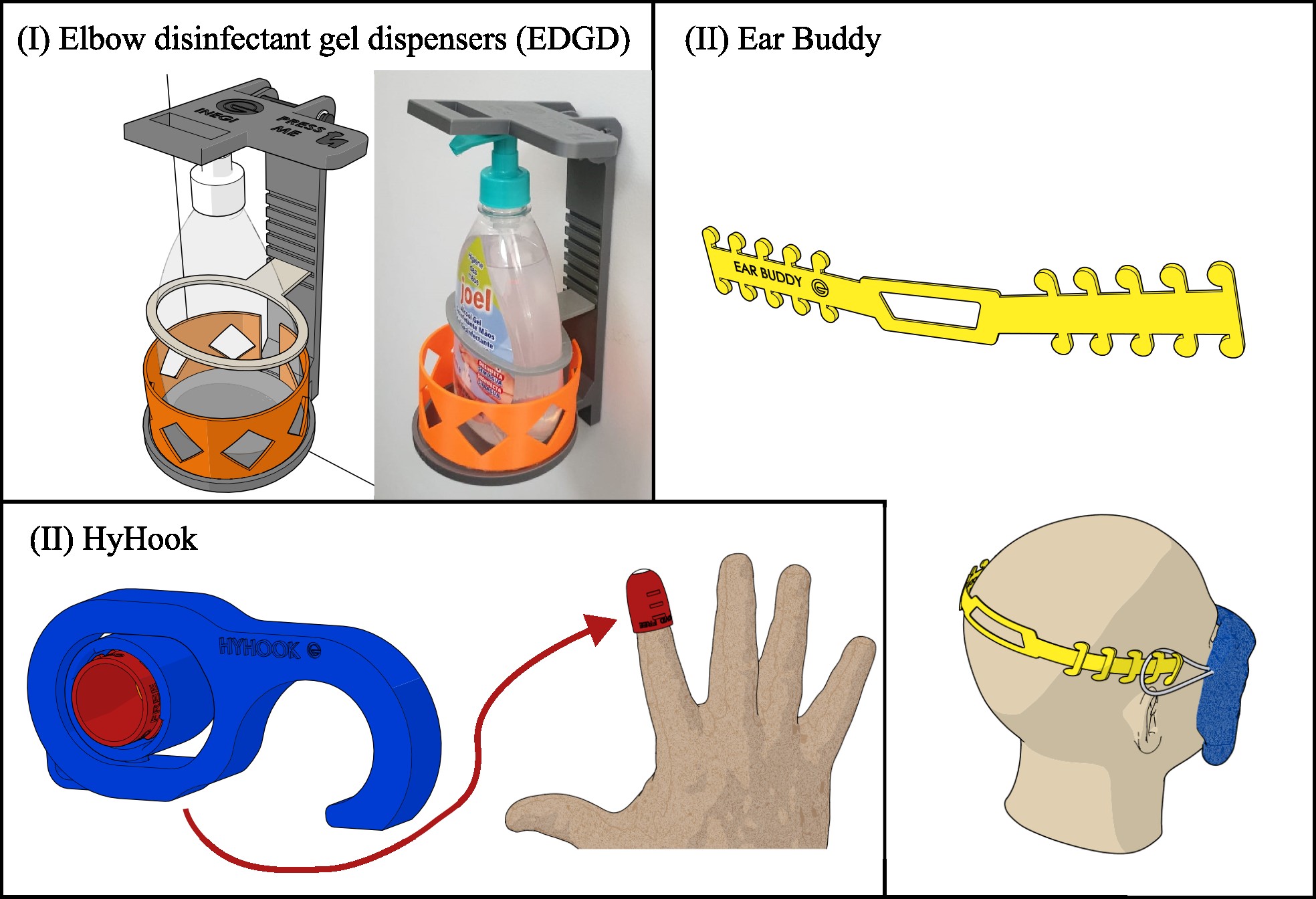 Development of 3D-printed (FFF) Devices to Fight COVID-19 TransmissionA. Pais, V. Pires, C. Ferreira, J Silva, J.L. Alves, and 2 more authorsIn Advances and Current Trends in Biomechanics, Oct 2021
Development of 3D-printed (FFF) Devices to Fight COVID-19 TransmissionA. Pais, V. Pires, C. Ferreira, J Silva, J.L. Alves, and 2 more authorsIn Advances and Current Trends in Biomechanics, Oct 2021This work consists on the description of the development process of several devices to prevent COVID-19 spread in common places such as door handlers and sanitizer dispensers. In order to obtain functional prototypes as fast as possible, the Fused Filament Fabrication (FFF) process was used. The chosen material to print the devices was Polylactic acid (PLA), as well as other anti-bacterial polymers. The mechanical functioning of the devices was validated using numerical simulation with the finite element method. The solutions obtained proved to be efficient, functional, and to present a lower cost than already available solutions.
@incollection{paisDevelopment3DprintedFFF2021, title = {Development of {{3D-printed}} ({{FFF}}) Devices to Fight {{COVID-19}} Transmission}, booktitle = {Advances and {{Current Trends}} in {{Biomechanics}}}, author = {Pais, A. and Pires, V. and Ferreira, C. and Silva, J and Alves, J.L. and Bastos, J. and Belinha, J.}, year = {2021}, month = oct, edition = {1}, pages = {231--235}, publisher = {CRC Press}, address = {London}, doi = {10.1201/9781003217152-51}, urldate = {2024-01-31}, collaborator = {Belinha, Jorge and Campos, Jos{\'e} Carlos Reis and Fonseca, Elza and Figueiral Silva, Maria Helena and Marques, Maria Arcelina and Gentil Costa, Maria Fernanda and Oliveira, Susana}, isbn = {978-1-00-321715-2}, langid = {english}, }